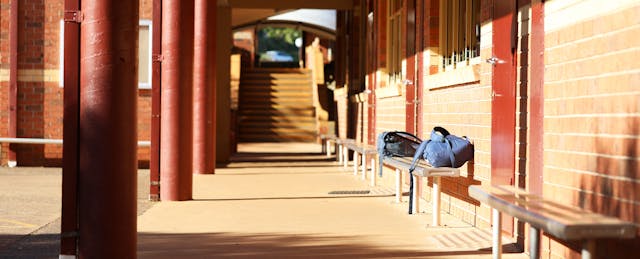Across the country, schools are trickling out for a well-deserved summer break, and for some, the start of summer school. But despite the economic reopening plans many states are rolling out, many schools aren’t offering summer programs at all. And those that are planned aren’t taking place in person, according to a recent analysis from the Center for Reinventing Public Education, or CRPE.
“A lot of the schools are still doing virtual summer school,” says Sean Gill, a research analyst for CRPE who co-authored the report. “I think that speaks to the uncertainty even in the states that are reopening.”
According to the CRPE analysis, which looked at plans from more than 100 districts and charter school groups, less than half were offering summer programs for elementary and middle school students, while 58 percent were offering a program for high schoolers. A separate analysis of 196 school traditional public and charter school districts by the behavior analytics firm Social Context Labs and EdSurge, representing different geographies, sizes and poverty levels, turned up similar results. Among the districts in our study of published policies, 60 percent offered some type of summer school.
When it comes to existing summer programs, many are offering credit recovery and other traditional offerings. That approach might miss an opportunity for addressing learning loss caused by missed instruction during the switch to remote learning, according to the CRPE analysis.
“This summer presents a perfect time for districts to pilot new strategies not usually in their repertoire, and instead try to rebuild something different,” such as enrichment and other targeted programs aimed at smaller groups, the authors write.
“I think we were hoping to see, or were curious to see, if districts would say, ‘This is where we can test out a blended model,’” says Gill, referring to the mix of online and in-person instruction that might become necessary as COVID-19 infections continue.
“Summer [learning] is usually not required,” says Gill, who spoke on a recent EdSurge/ISTE webinar on the subject, which is embedded below. Although the CRPE analysis did not find districts mandating summer attendance, “we’ve seen schools say, ‘It's recommended for you to come,’” Gill adds.
But blended learning options are few and far between. Among the districts that EdSurge examined, only 10 districts, or 5 percent, reported that they are considering some in-person component along with online learning. Often these plans are contingent upon health guidance and movement restrictions changing to permit in-person instruction, and some groups—such as the Hawaii State Department of Education—plan to target only high-need students with in-person offerings.
For now, infection rates might not yet permit in-person classes to resume, as health experts recommend that COVID-19 cases in a given area decline over a 2 week period. However, in places where in-person instruction is possible, summer might be a chance to do something different, says Kristina Ishmael, a research fellow for the think tank New America, speaking on the same webinar.
“I think it really is an opportunity for us,” she says. “Obviously the small groups are certainly helpful given social distancing guidelines.” It may also give schools a chance to pilot working with small groups and with special populations, such as English learners and special education students, she adds.
At Oakland Unified in California, about 3,000 of the district’s roughly 36,000 students are taking online summer classes, according to Kelleth Chinn, the instructional technology and assessment coordinator for the district. During the school year, attendance tracking was deemphasized to give students a chance to adjust to remote learning, and so that students without access to devices and internet connections were not marked absent.
“We did not use our regular attendance tracker during the [spring] school closures, but we’re actually experimenting with that during summer school,” says Chinn. “If you can’t get in touch with the students and you’re marking them absent, that should not be something that they’re penalized for. That should be more of a flag to find out...what’s going on with that student.”
A previous spring analysis by CRPE found that only a third of districts tracked student attendance during remote learning. Half continued to grade student work, either through letter grades or a pass/fail system that may include incompletes.
“If you’re getting an incomplete, even if it’s not a failure, you still don’t have the credit that you would need to graduate,” says Gill.
Those districts that did continue to monitor attendance and course progress may be in a better position to suggest targeted summer interventions to make up for learning loss or credit recovery programs to help students stay on track to graduate or move on to the next grade, according to the more recent CRPE report about summer learning.
A summer reading program in Florida’s Broward County, which is cited in the report, may benefit third grade students who did not meet literacy requirements and might have been held back in a typical school year. (Because of the extraordinary circumstances, schools are promoting students en masse regardless of factors like attendance or performance.)
Yet online credit recovery and similar interventions must be well-designed to be effective, as research into such programs has not been kind, or is at best inconclusive. All that might explain the hesitancy to rush into offering summer programs, given that so much about the future remains unknown.
Rachel Burstein contributed research and analysis.
This is a brief recap of the conversation. To hear the rest, listen to the episode in the player on this page. You can also find the EdSurge Podcast on Apple Podcasts, Overcast, Spotify, Stitcher, Google Play Music, or wherever you listen to podcasts.


